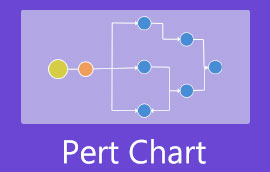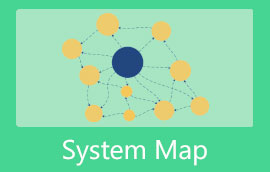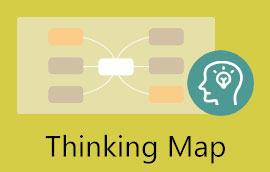Step-by-Step Tutorial: Create a Spanish History Timeline with MindOnMap
The story of Spain is a complex mosaic, interlaced with the tales of ancient societies, medieval empires, and contemporary issues. A visual timeline can be an essential aid to grasp the depth and importance of these occurrences. This tutorial will explore a Spanish history timeline using MindOnMap. It's a tool for organizing data, showing connections, and creating interactive timelines. By the time you finish this tutorial, you'll have all the skills and know-how you need to create your timeline of Spanish history. It will let you dive into the fascinating events and people who have played a big part in making Spain the vibrant country it is today. Let's begin our exploration of Spanish history and learn how to construct an engaging timeline with MindOnMap.

- Part 1. How to Make Spanish History Timeline
- Part 2. Spain History Timeline Explanation
- Part 3. FAQs on How to Make Spanish History
Part 1. How to Make Spanish History Timeline
Making a Spain history timeline is a cool way to dive into Spain's rich and varied past. From the early times on the Iberian Peninsula to when empires came and went, the impact of the Roman Empire, the Reconquista, and what's happening now, Spain's history is huge and complicated. A good timeline makes it easier to see the important events and how they're all linked, helping you better grasp how they've all come together to tell Spain's story. MindOnMap is a simple online tool that makes all sorts of diagrams, like history timelines. It has easy-to-use features that let you lay out your info in a way that's easy to understand, making it great for school stuff, giving talks, or just doing projects on your own. With MindOnMap, you can make a cool and detailed timeline of Spanish history that shows off the important events and times in a fun way.
Secure Download
Secure Download
Main Features
• It has a simple and eye-catching design that makes it a breeze to sort historical events in order.
• It lets you pick and choose from different timeline styles to fit your needs perfectly.
• You can spice up your timeline with pictures, symbols, and links to make it more engaging and informative.
• It lets more than one person work on the same timeline simultaneously, making it great for group projects.
• You can share your timeline with a simple link or save it in different formats, such as PDFs or images, making it easy to showcase and share with others.
• It is stored in the cloud, so you can access it from anywhere. You can also save your work ,keeping it safe and always current.
A step-by-step guide to making Spain historical timeline using this timeline maker..
First, go to the MindOnMap website and sign up for a free account or log in.
After logging in, click on the dashboard, choose the New button, and choose the Fishbone.
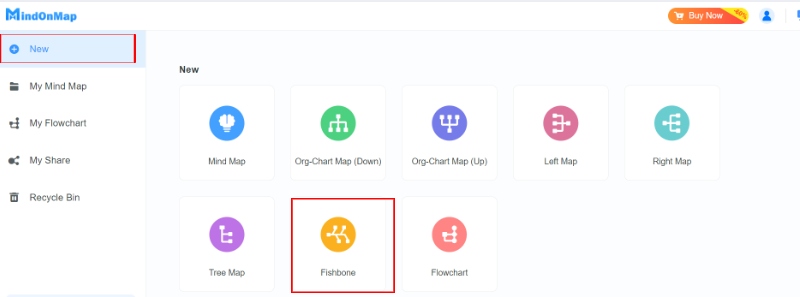
Next, decide how much history you want to cover in your Spanish history timeline. Use the timeline structure to highlight important times For each period, throw in big events, dates, and a bit about what happened. You can add Topics and subtopics. Add text boxes, pictures, and symbols to make it look better.
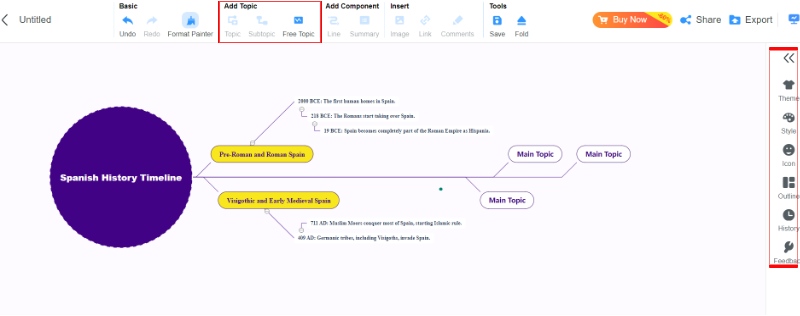
Review your timeline to ensure accuracy and completeness once you've entered all the events and details. You can share it right from MindOnMap. Hit the Share button to create a link for sharing with others or save it.
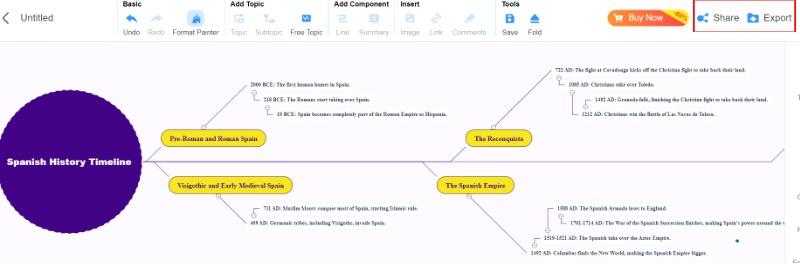
This process is simple, isn’t it? And if you want to create a spider diagram., brainstorm map, or anything else, this tool can cover them all.
Part 2. Spain History Timeline Explanation
Spain's past is full of interesting and complicated stories, including its old times with ancient cultures, its takeover fights over religion, and its days as a big colonial power. From its start on the Iberian Peninsula to today, it is a strong country and a democracy. Spain's story shows how tough it has been and how much it has changed. This Spanish Civil War timeline looks at the big moments that have made Spain what it is today.
Pre-Roman and Roman Spain (Before 409 AD)
Before 409 AD, Spain settles people in 2000 BCE. This era saw the growth of different cultures like the Iberians and Celts, setting the stage for later societies. In 218 BCE, Rome started taking over the Iberian Peninsula during the Second Punic War, aiming to increase its power there. Over the next two centuries, Rome successfully controlled the region. In 19 BCE, Spain or Hispania was fully part of the Roman Empire, playing a key role in the Roman economy, culture, and military.
Visigothic and Early Medieval Spain (409 - 711 AD)
409 AD: The fall of the Roman Empire caused Germanic tribes like the Visigoths to invade, eventually creating a kingdom in Spain. The Visigoths were stable and helped prepare for future Christian kingdoms.
711 AD: Muslim Moors from North Africa invaded Spain, starting Islamic rule over most of the Iberian Peninsula. This era led to the creation of Al-Andalus, a place famous for its cultural and intellectual contributions.
The Reconquista (722 - 1492 AD)
722 AD: The Battle of Covadonga in northern Spain started the Reconquista, a Christian campaign to remove the Iberian Peninsula from Muslim control. This battle was crucial, leading to Christian kingdoms in the north.
1085 AD: The Christians' capture of Toledo was a major victory in the Reconquista. Toledo became a symbol of Christian success and a cultural hub in Europe.
1212 AD: Las Navas de Tolosa’s battle was a big win for Christians, turning the tide of the Reconquista and marking the beginning of Spain's Muslim power slide.
1492 AD: The fall of Granada, the last Muslim city in Spain, ended the Reconquista. It also happened at the same time as Columbus's journey to the New World, beginning Spain's worldwide empire.
The Spanish Empire (1492 - 1714 AD)
1492 AD: Christopher Columbus found the Americas, starting Spain's huge empire. Spain became very powerful, with lands in the Americas, Asia, and Europe.
1519-1521 AD: Hernán Cortés led an expedition that made Spain rich by conquering the Aztec Empire, showing its strength.
1588 AD: Spain lost the Spanish Armada to England, showing its naval power was weakening.
1701-1714 AD: The War of Spanish Succession ended with the Treaty of Utrecht, reducing Spain's power in Europe and showing its global empire was falling.
Bourbon Reforms and Enlightenment (1700 - 1808 AD)
1700 AD: The Bourbon family took over Spain, starting big changes to make the country more modern and improve its government and economy, which caused big social and political shifts.
1763 AD: The Treaty of Paris finished the Seven Years' War, changing Spain's borders and sparking new ideas that led to more reforms.
1808 AD: Napoleon Bonaparte attacked Spain, starting the Peninsular War. This attack weakened Spain and helped spark resistance and the push for independence in Latin America.
19th Century Spain (1812 - 1898 AD)
1812 AD: The Spanish Constitution of 1812, also called La Pepa, was one of the first in Europe. It tried to make Spain a constitutional monarchy and lessen the king's power but faced strong opposition.
1833-1876 AD: The Carlist Wars were a series of civil wars in Spain over who should be king and the Catholic Church's role in society. They showed deep divisions in Spanish culture.
1898 AD: In the Spanish-American War, Spain gave up its biggest overseas territories, like Puerto Rico, Cuba, and the Philippines. This ended the Spanish Empire and worsened Spain's situation.
20th Century Spain (1931 - 1975 AD)
1931 AD: Spain created a new government, causing chaos and protests that led to the Spanish Civil War.
1936-1939 AD: The Spanish Civil War was a fierce battle between two sides, the Republicans and Nationalists, with General Francisco Franco winning. Franco's win made Spain a dictatorship until he died in 1975.
1939-1975 AD: Franco's dictatorship was strict, controlled information, and slowed the economy. But, towards the end, Spain started to modernize and develop industries.
Modern Spain (1975 - Present)
1975 AD: Franco's death started Spain's move to democracy, known as the Spanish Transition. King Juan Carlos I was key in this change, leading to a constitutional monarchy.
1978 AD: Spain's new constitution made it a parliamentary monarchy. It strengthened democracy and gave more power to local governments.
1986 AD: Spain became part of the EU, integrating into the European economy and politics.
2017 AD: The Catalan independence vote and its aftermath showed deep regional conflicts in Spain, especially over Catalonia's desire for more independence.
This Spanish history timeline explanation gives you a quick look at the big events and times that have influenced Spain's history, from ancient times to today.
Part 3. FAQs on How to Make Spanish History
In what ways can I make a timeline of Spanish history?
You can make timelines online or with software. MIndOnMap is great for creating visible timelines. It has features that let you create and tweak interactive timelines.
How do I get started on making a timeline of Spanish history?
First, look up important events in Spanish history and arrange them in order from earliest to latest. Then, pick a tool or software to use and begin adding the events, their dates, and any other important information. Tweak the design to make it better and more eye-catching.
What should you put on a Spanish history timeline?
Here are the main things to include: Dates and Time Slots: Make sure the dates for historical events are spot on. Event Summaries: Write short but helpful summaries for each event. Pictures and Symbols: Use photos, symbols, or drawings to show important events or people. Fun Features: If you're making the timeline online, adding interactive stuff like links or pop-ups can make it more interesting.
Conclusion
Making Spain history timeline with MindOnMap is an awesome way to view Spain's deep history visually. MindOnMap's cool features make it simple to sort and tweak timelines, making it great for school projects or just for fun. The Spain History Timeline gives you a close-up look at big historical moments, giving you a full picture of how Spain has changed. Using MindOnMap's tools and what you know about history makes for a well-organized and interesting timeline.








